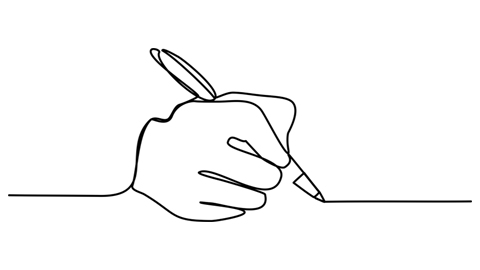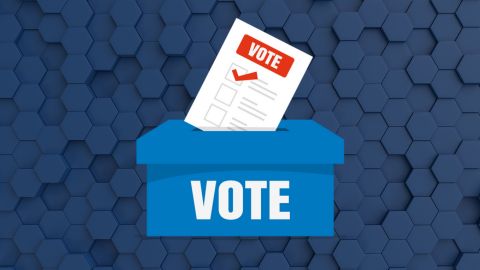
6 tips for writing an effective recommendation letter
Recommendation letters can have a significant impact on an individual's chances of securing research grants, academic positions or awards. However, researchers and academics receive almost no training in how to write them. As both a recipient and writer of six successful recommendations for awards in academic leadership, public communication and engagement and research excellence, I share here my top tips on writing an effective recommendation letter and some examples to help you get started.

1. Confirm eligibility
Before you even consider writing a letter, ensure that the applicant meets the eligibility criteria for the scheme or position. If they do, specify this in writing in the recommendation. This demonstrates that you have done your due diligence checking the requirements, which builds trust in your recommendation. It also ensures you do not accidentally waste your time endorsing an ineligible applicant.
2. Confirm your appropriateness
Before agreeing to write a recommendation letter, be sure you have a good relationship with the applicant and you're comfortable commenting on their work. For example, if you're a clinical supervisor, you might only feel comfortable commenting on the applicant's clinical work. It's important to communicate this upfront. According to a linguistic analysis of recommendation letters published in the Journal of Surgical Education, having a direct relationship with the applicant is more effective than having a high academic rank. Tell the applicant clearly what areas you feel qualified to assess so they can approach someone else if they need a more comprehensive letter.
3. Define your relationship
In your letter, specify the type and length of your relationship with the applicant. This shows that you have the authority to make recommendations and can speak to the applicant’s qualities and achievements. This is particularly important if your relationship has evolved (from a supervisor to a mentor, for instance) or you are co-writing a recommendation with others.
4. Quote the assessment criteria
Most readers use recommendation letters to evaluate whether an applicant is suitable for the scheme/position they are applying for. Make this easy for the reader by directly quoting the relevant assessment criteria and then providing the relative evidence. This eases the workload for the reader and ensures they do not miss any evidence showing why the applicant is suitable.
5. Give specific examples
Rather than simply listing generic strengths and characteristics (such as dedicated, collaborative and innovative), provide specific examples of how the applicant has applied those strengths in relevant situations. This validates the abilities of the applicant by providing concrete evidence and gives your recommendation letter greater authenticity as it features personalized information on the applicant. The latter is especially valuable considering the rise in popularity of artificial intelligence tools for writing.
6. Quantify the applicant’s abilities
Where possible, provide metrics or quantified evidence to support your recommendation of the applicant. Objective, quantified descriptions of the applicant’s abilities, particularly when described in relation to their field of work, can be more impactful than subjective descriptions of the applicant's character or abilities and can help avoid the use of biased language that is commonly associated with recommendations letters written for women and members of historically underrepresented groups.
Table 1: Examples of how to write a more effective recommendation letter
|
Confirm eligibility |
❌ Person X is a suitable candidate. |
✅ I confirm Person X meets the criteria of having a Ph.D. and being a U.S. citizen. |
|
Define your relationship |
❌ I work with person X. |
✅ I've known person X for five years: as their Ph.D. supervisor from 2018 to 2020 and then as a mentor from 2020 to now. |
|
Quote assessment criteria |
❌ Person X led the innovative project. |
✅ Person X led the project, exemplifying the award criteria of "strong commitment to innovation." |
|
Give specific examples |
❌ Person X excels at teamwork. |
✅ Person X quickly made online channels so the team could communicate effectively while working from home. |
|
Quantify their abilities |
❌ Person X is an enthusiastic teacher. |
✅ Person X increased student responses by 23% in only four weeks, the greatest increase by any education staff member since 2018. |
Finally, it is important to consider any unconscious biases you have that may influence your letter. In particular, several studies have shown that women receive shorter and less favorable recommendation letters than men based on letter length, tone of language and specific adjectives used to describe the applicant. Running your recommendation letter through a gender bias calculator can help you identify any gender-associated words that you may have unconsciously included. Other linguistic biases also exist (e.g., race) and, therefore, each letter should be reviewed carefully if the applicant is part of a minority or disadvantaged group. Other considerations during review including checking for grammatical errors and adherence to formatting guidelines should not be discounted as while a well-written recommendation letter may not guarantee the applicant’s success, a poorly-written letter will very likely result in them being unsuccessful.
Enjoy reading ASBMB Today?
Become a member to receive the print edition monthly and the digital edition weekly.
Learn moreFeatured jobs
from the ASBMB career center
Get the latest from ASBMB Today
Enter your email address, and we’ll send you a weekly email with recent articles, interviews and more.
Latest in Careers
Careers highlights or most popular articles

Calendar of events, awards and opportunities
Nominate colleagues for the ASBMB annual awards and your favorite molecule for our inaugural contest!


Let’s make ASBMB awardees look more like BMB scientists
Think about nominating someone outside your immediate network.

Calendar of events, awards and opportunities
It's time to vote in the society's election, and time's running out to nominate colleagues for the ASBMB annual awards.

Calendar of events, awards and opportunities
Apply for our Advocacy Training Program by April 19. Plus, submit your entry for molecule of the year!

So, you went to a conference. Now what?
Once you return to normal lab life, how can you make use of everything you learned?

